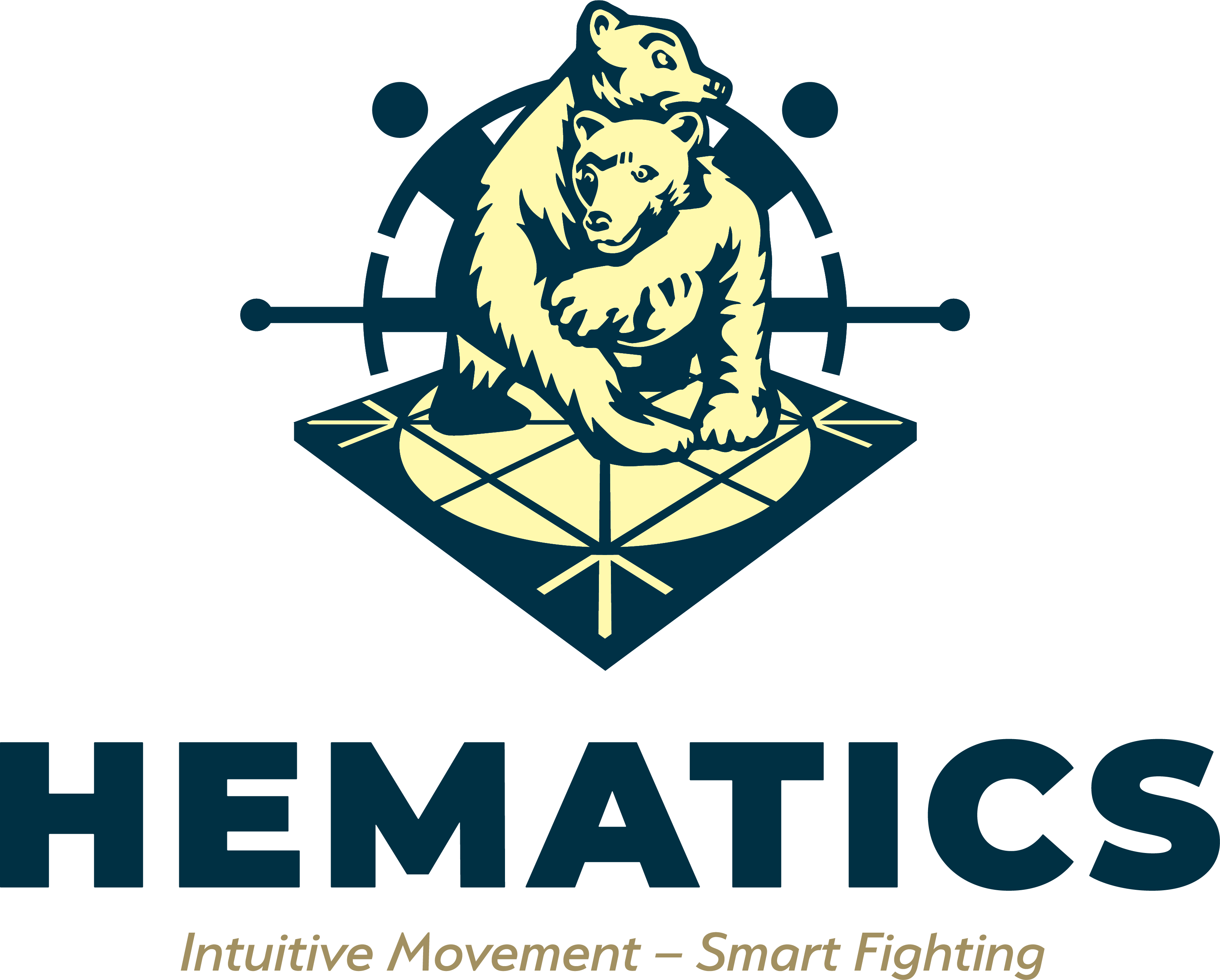Stance
Footwork Basics
First Contact
Four Guards: Vier Huten
Oberhau – The four diagonal cuts part 1
Unterhau – The four diagonal cuts part 2
Thrust in Langort
Meyer’s Cross: Das Meyerkreuz
Breathing Basics
Origin of Movement
Basic Flow
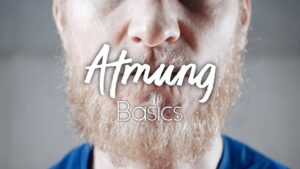
Breathing Basics
If you were asked how you breathe during training or sparring, what would you answer? Are you aware of the way you breathe?
In this video we want to show one basic principle of strong breathing. Furthermore we want to show how you coordinate your breathing with your movement to imporve the quality of your training.

Avoiding & Parrying Thrusts
Is the Vor & Nach more like a coin or like a crossroad?
In this video we will have a look at the Vor & Nach in theory. How can it be used as a basis for your understanding of fencing. How can it bring order into the chaos of a fight. How can it help to guide you in training. In the end we will have a look at it in two fencing plays: The Zornhauort with Abnehmen and the Nachreisen with Streichen.
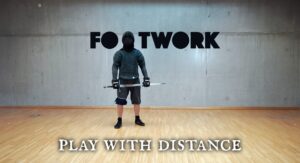
Footwork – Play with Distance
In this video we work unarmed, with a stick and with the longsword. Ingulf takes the role of trainer giving clear signals, Joey the Panda Hopfgartner takes the role as fencer reacting to these signals.
Our goal is to combine known techniques and footwork into one exercise, to move fluently from one direction to the other, from one technique to the next.
We work in two different speed levels: a controlled and slow speed level without protective gear and a swung and fast speed level with protective gear. It is important to work at a good pace with a clear mindset in both speed levels.
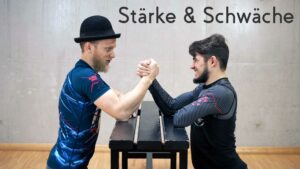
Strong & Weak : Stärke und Schwäche
The further something is away from us the less control we have. The closer something is the more control we get. This rule of physics is described as Strong & Weak in the German fencing manuals on Longsword. How this rule effects our fencing Ingulf not only explains to us, but also makes our monkey brains experience and feel it.

Vor & Nach Theory
Is the Vor & Nach more like a coin or like a crossroad?
In this video we will have a look at the Vor & Nach in theory. How can it be used as a basis for your understanding of fencing. How can it bring order into the chaos of a fight. How can it help to guide you in training. In the end we will have a look at it in two fencing plays: The Zornhauort with Abnehmen and the Nachreisen with Streichen.
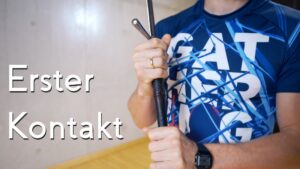
First Contact
The most important thing when you want to learn something is... to start.
Second important is to start easy. In this video you will see some easy exercises to start. Ingulf explains the first grabbing of the Longsword. An action that can be used as concious entry into training. Furthermore he shows exercices how to introduce beginners who come to training the first time to moving intuitivly with the longsword.
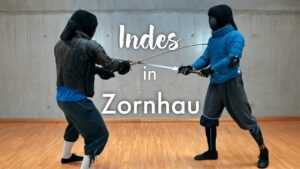
Indes in Zornhau
An advanced technical lesson that combindes Zornhau(ort) and Winding towards inside and outside. You learn to observe the Vor and Nach in Zufechten and to feel the hard and soft in the Edler Krieg. What you need is a skilled and experienced training partner that gives you clear signals. First train them piece by piece and then combine them. Take your time! Speed comes with routine and competence.
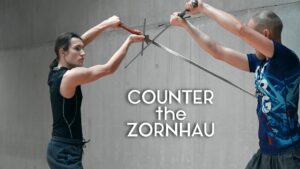
Counter the Zornhau
How to counter the Zornhau? You will use a winden with thrust against the Zornhau. From there a long play (Stück) that includes several techniques will establish.
There sure are other ways. If you have ideas feel free to explore yourself.
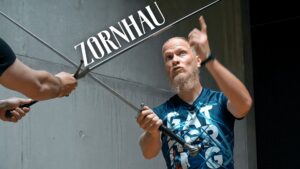
Zornhau without Ort
In this short video we use the Zornhau against a cut from above.
This time we do not use a thrust (ort) against the attack but step closer and cut directly to the face.
As usual it is really important to have control over the strong and weak in the bind.
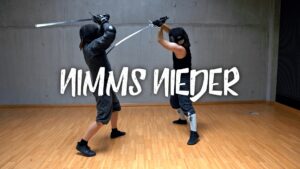
Nimms Nieder
"Nimms nieder" which means as much as "take it down" refers to a technique described after a winding action in the Zornhau pieces. After your opponent has defended your thrust upwards you take your point down and stab him between his hands towards his face or chest. We start with really simple exercises to get used to this movement and then move on to complex reaction drills. Have fun.
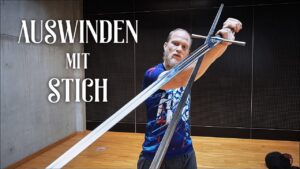
Winden with Thrust
We have a look at one of the first described "Winden" in the Liechtenauer System:
In the Zornhauort it is provided as an alternative to the Abnehmen. It is an exciting technique because while we turn our blade to stab him from the outside, our own body (our "Blösen") remains open to an attack from our oponent. During all this we stay in contact with the oponents blade, which allows us "Fühlen" (to feel). This is extremely important to find the right timing, a keyrequirement for this technique.
We start with simple exercises to learn the movement and finish with a complex reaction drill which combines Zornhauort, Abnehmen and Winden. Have fun!
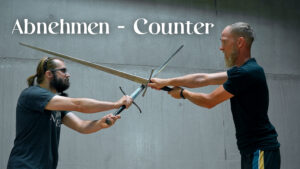
Abnehmen Counter
There's a counter for everything. That means that there isn't a single uncounterable technique, because if that were the case, then it'd be good for us fencers. We'd only have to train the one technique and we'd always win with it.
In this video we have a look at a counter against the Abnehmen. We look at the fencing manual, make three slightly different interpretations and in the end choose the one that we like best. Have fun.
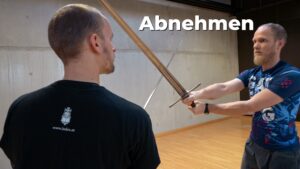
Abnehmen
"Wer dir öberhawt / Zornhaw ort dem drawt. Wirt er eß gewar / Nym oben ab öne far".
This Liechtenauer Rhyme can be translated: "Who cuts an Oberhau (Cut from above) towards you is threatened by the Zornhau-Ort. If he notices it, make the Abnehmen (take it up and off)"
You will train the Abnehmen in different levels. You can choose a difficulty that suits you best. This way you can train your body in and towards a good structure.
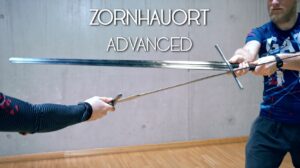
Zornhauort Advanced
Zornhauort - simple and masterly. After our first interpretation of the Zornhauort which divided the technique into two tempi we now show a variation which attacks directly and therefore faster to the opening of the oponent. Beside masterly details on footwork, distance and timing we talk about what is simple in the Zornhauort, because as in the fencing manuals described the Zornhauort is nothing else but a simple Bauernschlag (Peasantstrike).
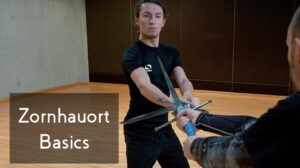
Zornhauort Basics
You will learn the first Mastercut in the Liechtenauer Tradition: The Zornhauort.
"Ort" is the old word for the point of the sword and in this case it stands for a thrust that follows after the Zornhau.
In this interpretation the technique is performed in two tempi. You will find a faster version in only one tempo in the later Zornhau advanced.
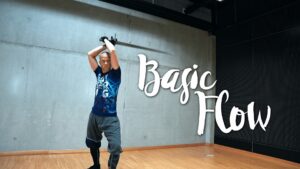
The Basic Flow
A video in which Ingulf Popp-Kohlweiss connects the ideas of the previous videos into one training: Breathing, Stance, Footwork Basics, 4 Guards, Oberhau, Unterhau and Thrust into Langort are all combined into one basic flow.
You will learn how to train these basics of Longsword training in one efficient exercise. This helps you save time while repeating the most important basics of your training.

Breathing Basics
If you were asked how you breathe during training or sparring, what would you answer?
Are you aware of the way you breathe?
In this video Ingulf Popp-Kohlweiss shows one basic principle of strong breathing.
You will learn how you coordinate your breathing with your movement to improve the quality of your training.
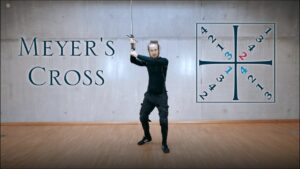
Meyer’s Cross: Das Meyerkreuz
A learning aid to the four times four cuts from Joachim Meyers fencing manual from 1570. We work with the long edge from the outermost to the innermost sequence. At the end you will see a short demonstration how to use your breathing to combine the cuts.
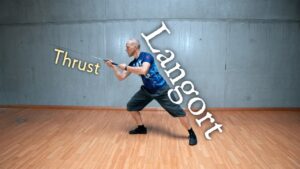
Thrust in Langort
Ingulf Popp-Kohlweiss shows a second “Wunder” in the Liechtenauer System: The Thrust.
“Wunder” comes from wound, so it stands for a wounding action.
You will train a version of the thrust with the most reach. The thrust into the position “Langort”.
You first do it while standing still, then you combine it with different variations of footwork. In the end you perform the stab from changing through the four guards.


